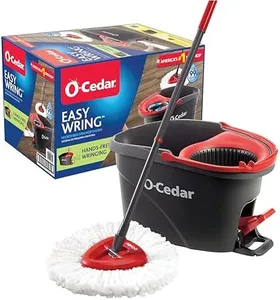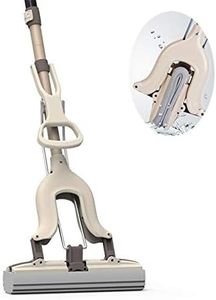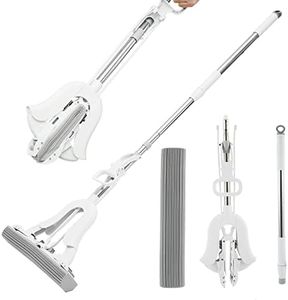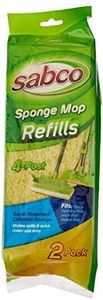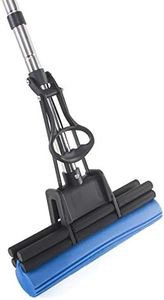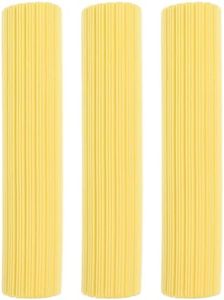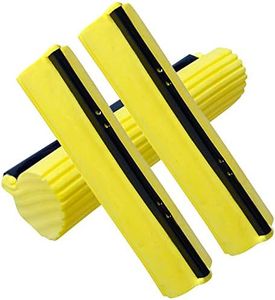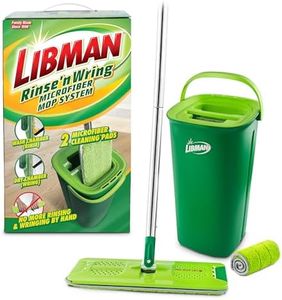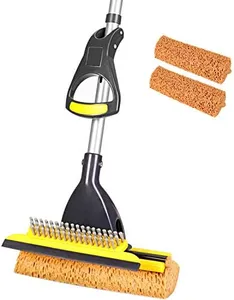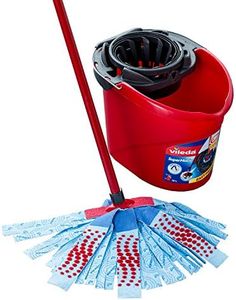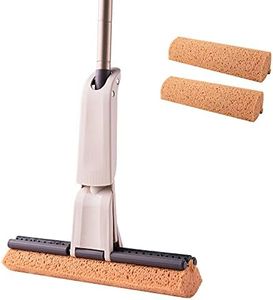We Use CookiesWe use cookies to enhance the security, performance,
functionality and for analytical and promotional activities. By continuing to browse this site you
are agreeing to our privacy policy
10 Best Sponge Mops
From leading brands and best sellers available on the web.By clicking on a link to a third party's website, log data is shared with that third party.
Buying Guide for the Best Sponge Mops
Choosing the right sponge mop can make cleaning your floors much easier and more effective. With many types and features available, it's important to consider how often you plan to use the mop, the kinds of floors you have, and your personal preferences for handling and maintenance. Take some time to understand the different specifications so you can select a mop that matches your cleaning needs and provides comfort during use.Sponge MaterialThe sponge part of the mop is the piece that will be in direct contact with your floors, so its material matters a lot. Most sponge mops use either cellulose or synthetic materials. Cellulose is absorbent and good for picking up liquid spills, but can deteriorate if left wet or used with strong cleaners. Synthetic materials are often more durable and quicker to dry, making them easier to maintain over time. Decide which type suits your cleaning habits—a natural feel and absorbency from cellulose or extra durability and fast drying from synthetic.
Handle Type and LengthHandle type affects comfort and reach while mopping. Some handles are adjustable, letting you change the length to fit your height or reach under furniture. Fixed-length handles are usually lighter and simpler but may not suit everyone’s posture or room configurations. Choosing the right handle depends on your height and where you intend to use the mop—adjustable handles are best if you need flexibility or will be sharing the mop, while fixed handles are better if you want simplicity and lighter weight.
Wringing MechanismThe wringing mechanism is what helps you squeeze water out of the sponge without using your hands. Common wringers include rollers, levers, and twist styles, each offering a different level of control and ease of use. Rollers tend to remove more water and are good for people who want a drier sponge, but might be harder to operate. Lever-action wringing is easier but may leave the sponge wetter. Consider how much effort you want to spend wringing out the mop and how dry you want the sponge to be for your floors.
Sponge Size and ShapeSponge size and shape impact how much area you can clean at once and how easily you can reach corners or edges. Larger sponges are efficient for cleaning big open floors, while smaller or angled sponges can maneuver into tight spaces and corners. Think about the layout of your cleaning spaces—if you're mostly cleaning large rooms, a bigger sponge may save you time; if you have lots of corners or furniture, opt for a smaller or uniquely shaped sponge.
Replaceable HeadsSome sponge mops allow you to replace just the sponge head when it wears out, while others require replacing the whole unit. Replaceable heads are convenient and more eco-friendly, and make it easy to keep your mop effective over time. If you plan to use your mop frequently, having an easily replaceable head is a practical choice that saves you money and hassle in the long run.
